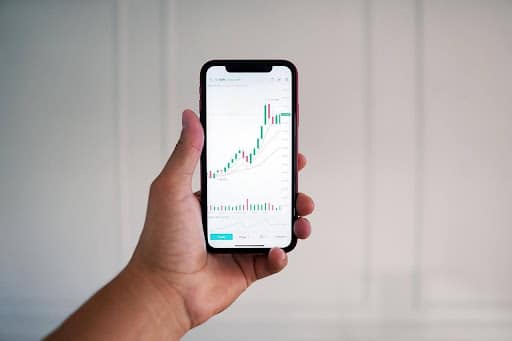In the dynamic world of stock trading, liquidity plays a crucial role, especially in emerging markets like Kenya. The ability to buy or sell assets without significantly affecting their price is essential for traders looking to maximize their returns. This article delves into the complexities of stock market liquidity in Kenya, providing advanced traders with strategies to navigate and leverage liquidity for optimal trading outcomes.
When engaging in stock trading in Kenya, understanding the nuances of liquidity can be the difference between a successful trade and a missed opportunity. Liquidity, in simple terms, refers to the ease with which an asset can be converted into cash without impacting its market price. High liquidity implies that assets can be bought and sold quickly, whereas low liquidity suggests difficulty in executing trades without significant price changes.
Understanding Stock Market Liquidity in Kenya
Liquidity is a key determinant of market efficiency and trading costs. In Kenya, the stock market is characterized by varying degrees of liquidity across different stocks. Highly liquid stocks tend to be those of well-established companies with high trading volumes, such as those listed on the Nairobi Securities Exchange (NSE). However, many stocks on the NSE may suffer from lower liquidity, leading to wider bid-ask spreads and increased trading costs.
Factors Influencing Liquidity in Kenya
Several factors influence the liquidity of stocks in the Kenyan market, including:
- Market Participation: The number of active traders in the market significantly impacts liquidity. A higher number of participants usually leads to higher liquidity.
- Economic Conditions: Economic stability and growth prospects in Kenya can influence investor confidence and market activity, affecting liquidity.
- Regulatory Environment: Government policies and regulations can either enhance or hinder market liquidity. In Kenya, ongoing reforms and initiatives by the Capital Markets Authority (CMA) aim to improve market infrastructure and boost liquidity.
- Foreign Investment: The involvement of foreign investors in the Kenyan stock market can have a substantial impact on liquidity, as these investors often bring in significant trading volumes.
Advanced Strategies for Navigating Liquidity in Kenya
1. Liquidity Analysis Before Trading
Before executing any trade, advanced traders should conduct a thorough liquidity analysis. This involves evaluating the average daily trading volume of the stock, the bid-ask spread, and historical price movements. Stocks with high liquidity are typically preferred for short-term trading strategies, while those with lower liquidity may be better suited for long-term investments.
- Identify Liquid Stocks: Focus on stocks that consistently demonstrate high trading volumes and tight bid-ask spreads.
- Evaluate Trading Patterns: Analyze trading patterns to identify periods of high and low liquidity, which can help in timing trades more effectively.
2. Leveraging Limit Orders
Limit orders are a powerful tool in managing liquidity risk. By setting a specific price at which to buy or sell a stock, traders can avoid the adverse effects of low liquidity, such as slippage or unfavorable price changes.
- Use Limit Orders for Illiquid Stocks: When dealing with stocks that have low liquidity, setting limit orders can help ensure that trades are executed at the desired price, preventing potential losses due to price fluctuations.
- Combine Limit Orders with Market Orders: For stocks with varying liquidity levels, combining limit orders with market orders can help strike a balance between execution speed and price control.
3. Timing Trades with Market Liquidity Cycles
Understanding and timing market liquidity cycles is crucial for advanced traders. In Kenya, as in other markets, liquidity can fluctuate throughout the trading day, influenced by factors such as market news, economic data releases, and global market trends.
- Trade During High Liquidity Periods: Advanced traders should aim to execute trades during periods of high liquidity, typically when the market opens or closes, to minimize trading costs and maximize execution speed.
- Avoid Low Liquidity Periods: Conversely, trading during low liquidity periods, such as lunchtime or just before market close, can increase the risk of unfavorable price movements.
Advanced Strategies for Navigating Liquidity in Kenya (Continued)
4. Utilizing Algorithmic Trading for Liquidity Optimization
Algorithmic trading, or algo-trading, is becoming increasingly popular among advanced traders in Kenya. These automated trading systems use pre-programmed strategies to execute trades at the most opportune times, optimizing for liquidity.
- Liquidity-Seeking Algorithms: These algorithms are designed to identify and capitalize on pockets of liquidity in the market. They analyze market data in real-time to execute trades when liquidity is high, thereby reducing the impact of slippage.
- Volume-Weighted Average Price (VWAP): VWAP algorithms execute trades at prices close to the daily average price, ensuring that trades are conducted at fair prices without causing significant market disruption. This is particularly useful in low-liquidity environments.
5. Diversifying Trading Strategies Across Multiple Stocks
To mitigate the risks associated with low liquidity, advanced traders should consider diversifying their trading activities across multiple stocks. This approach spreads the liquidity risk and can enhance overall portfolio performance.
- Portfolio Diversification: By holding a diverse portfolio that includes both high and low liquidity stocks, traders can balance the potential for higher returns from less liquid stocks with the stability of more liquid assets.
- Cross-Market Trading: Advanced traders may also explore opportunities in other regional or global markets to complement their activities in the Kenyan stock market, further reducing liquidity risk.
6. Engaging in Block Trading
Block trading involves the purchase or sale of a large number of shares in a single transaction. In markets with lower liquidity, such as Kenya, block trading can help prevent the significant price fluctuations that might occur if the same trade were executed in smaller portions.
- Negotiate Off-Market Deals: Advanced traders can negotiate block trades off-market to avoid impacting the stock’s market price. These deals are typically arranged through brokers or institutional platforms.
- Monitor Market Impact: Even with block trades, it’s essential to monitor the potential market impact. Engaging with experienced brokers who understand the intricacies of the Kenyan market can help in minimizing any negative effects on liquidity.
7. Capitalizing on Market Sentiment and News
In a market where liquidity can be volatile, staying informed about market sentiment and news is critical. In Kenya, local and global economic news, political developments, and company-specific announcements can all influence liquidity levels.
- Sentiment Analysis: Using sentiment analysis tools, traders can gauge the market mood and anticipate changes in liquidity. Positive news tends to attract more participants, thereby increasing liquidity, while negative news might have the opposite effect.
- News-Based Trading Strategies: Incorporating news-based trading strategies allows traders to react quickly to events that might impact liquidity. For example, entering or exiting positions in anticipation of significant news releases can help avoid liquidity traps.
8. Participating in Market-Making Activities
Market makers play a crucial role in providing liquidity to the stock market by continuously quoting buy and sell prices for a stock. While primarily the domain of large institutions, advanced individual traders in Kenya might engage in market-making through specific trading platforms or brokers.
- Providing Liquidity: By placing both buy and sell orders at competitive prices, traders can earn the bid-ask spread while contributing to market liquidity.
- Risk Management: Market-making involves exposure to certain risks, such as sudden price changes. Advanced traders need to implement robust risk management strategies to protect their positions while engaging in market-making.
Conclusion
Navigating stock market liquidity in Kenya requires a deep understanding of market dynamics and the application of advanced trading strategies. From liquidity analysis and algorithmic trading to block trading and market-making, there are numerous ways to optimize trading activities in this emerging market. By staying informed and utilizing these strategies, advanced traders can effectively manage liquidity risk and enhance their trading performance in the Kenyan stock market.




